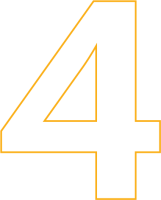Setting up CONNECT
-
We work with you in 4 collaborative steps to identify your needs, putting in practice our expertise on open science so you get the most out of OpenAIRE’s operational services.

Understanding your needs
First, we learn about your requirements and challenges. We help you understand Open Science practices, within EOSC or not, and together we’ll talk about how OpenAIRE CONNECT fits as a solution.
Develop a pilot
How do you work today, and how would you like to work tomorrow? We translate your needs into rules and processes and we configure operational OpenAIRE services, such as OpenOrgs, PROVIDE, OpenAIRE Graph or even Zenodo. By the end of this phase, we’ll have defined the basic configuration of your Community Gateway.

Test and Validate
You validate and test your new Community Gateway (portal) with your experts and community to ensure all workflows are in place and quality of data meets your standards. If needed, we work together in another iteration to further refine and adapt to your needs.
Roll out the service
We jointly roll out your new Community Gateway. You take over the business operations and start engaging your researchers, we take care of the smooth operation of the e-service. -

In this initial stage, you’ll work closely with the OpenAIRE team to define the purpose and vision for your Community Gateway. We’ll guide you through Open Science practices within EOSC and introduce the suite of OpenAIRE services that will be integrated into your gateway.
Here’s what to expect during this phase:
- Share Your Vision
Discuss your expectations and objectives for the gateway. Is your goal to:
- Provide researchers access to all research products within a specific discipline?
- Showcase research outputs resulting from the funding and services of a particular research infrastructure?
- Would you like the gateway to consolidate and showcase research outputs from all member institutions or consortia partners in one platform?
- Should the gateway showcase and promote Open Science practices across member institutions, such as adherence to FAIR principles or Open Access policies?
- ...
- Define Community Structure
Help us understand how your community is organized and what features you would like to bring forward. Is it formally or informally structured into sub-communities?
Examples include university alliances or national consortia with autonomous members, organizations like the European Grid Infrastructure (EGI), which organizes communities into “virtual organizations” based on disciplines or projects, and research infrastructures such as DARIAH, structured by national nodes like DARIAH-IT and DARIAH-DE, all of which provide tailored frameworks for collaboration and resource sharing.
Also see what features you would like to focus on:
- Would you like the gateway to allow browsing research outputs and gathering statistics for these sub-groups?
- Do you want to showcase research outputs by individual member institutions, with the ability to attribute and filter contributions by each partner?
- Would you like the gateway to emphasize connections and collaborations between different nodes or institutions within the consortium?
- Should the gateway integrate directly with repositories or digital libraries managed by member institutions, providing seamless access to research outputs?
-
Identify Research Outputs
Work with us to determine how we can identify your community’s research products within the OpenAIRE Graph. This might involve:
- Keywords or acknowledgment statements.
- Lists of relevant projects or repositories.
- Other indicators specific to your community.
- Share Your Vision
-

In phase 1, "Analyse your needs," we gather critical insights into your community’s requirements, priorities, and goals. Based on this, the OpenAIRE team takes the following steps to configure a pilot Community Gateway that reflects your vision:
1. Configuring OpenAIRE Services
Using the information provided, we configure the OpenAIRE mining algorithms to identify and extract research products from the OpenAIRE Graph that are most relevant to your community. This involves applying tailored criteria such as:
- Keywords and subject areas.
- Specific funding acknowledgments.
- Relevant repositories or datasets.
These configurations ensure that the research outputs presented in your gateway align with your community's scope and goals.
2. Deploying the Pilot Gateway
The pilot version of your Community Gateway is set up on the OpenAIRE BETA infrastructure. This version includes:
- A selection of relevant research products curated through configured mining rules.
- Basic statistics and visualizations to provide insights into community outputs and activity.
This pilot provides a functional starting point to test the gateway’s alignment with your community’s needs.
3. Demonstrating and Refining
The OpenAIRE team conducts a demo of the pilot Gateway, guiding you through its features and functionality. During this demo, we:
- Explain the configuration of mining rules and criteria for including research outputs.
- Showcase how to refine and update the selection process.
- Walk you through customization options, including logos, portal pages, and visual design.
4. Collaborative Refinement
After the demo, you and your community have the opportunity to test the pilot and provide feedback. If adjustments are needed, we collaborate to refine the mining criteria, layout, and functionality, ensuring the Gateway meets your expectations and delivers value to your users.
This iterative approach ensures your Community Gateway evolves into a customized, operational platform that fully supports your Open Science goals and community workflows.
-

Upon the completion of phase 2, you have the opportunity to test your Community Gateway to ensure it meets your expectations and supports your community's needs. During this phase, you’ll validate its features, functionality, and data accuracy while collaborating closely with the OpenAIRE team to refine the gateway as necessary.
1. Comprehensive Testing
Take the time to explore and evaluate all aspects of the gateway, including:
- Searching and browsing for relevant research products.
- Reviewing the accuracy and coverage of data.
- Adding or removing statistical indicators and visualizations from the portal.
A specially designed collaboration tool is provided, enabling you to report issues, ask questions, and communicate directly with the dedicated OpenAIRE team.
2. Iterative Configuration and Validation
This phase involves testing and refining the criteria used to include research products. The process typically includes:
- Adjusting the configuration to align with your community’s specific scope.
- Waiting for the new configuration to be applied to the OpenAIRE Graph.
- Validating the updated results to ensure adequate coverage and relevance of the selected research outputs.
3. Advanced Mining Algorithms (Optional)
For communities with specialized needs, the OpenAIRE team can implement dedicated mining algorithms. These algorithms, such as those designed to detect acknowledgment statements in full-text research articles, may require:
- Multiple rounds of application and validation.
- Fine-tuning to achieve high precision and recall in identifying relevant outputs.
Your feedback during this process is critical to minimizing the effort and time required, ensuring the gateway evolves efficiently into a high-quality, tailored resource.
4. Collaborative Refinement
Throughout this phase, your feedback drives further adjustments to ensure the gateway accurately represents your community’s outputs and priorities. By working together, we ensure your Community Gateway becomes a valuable, well-aligned platform that supports your Open Science goals.
This iterative approach guarantees a gateway that is not only functional and precise but also capable of evolving to meet the long-term needs of your community.
-

With the gateway finalized—research products covered, insightful statistics and charts selected, and user-ready portal pages in place—it’s time to roll out your Community Gateway and make it available to all researchers in your community.
1. Promote and Engage
As the Community Manager, you become the primary advocate for the gateway.
- Engage researchers by showcasing the gateway’s features and benefits.
- Inform research infrastructure managers about tools for monitoring impact and accessing valuable insights.
- Encourage active use of the platform to maximize its reach and utility.
2. Adapt as Your Community Evolves
The gateway remains flexible, allowing you to:
- Update configurations to address new needs or resolve issues as they arise.
- Adapt to the community’s evolution, such as adding new projects, integrating additional content providers, or refining mining criteria.
3. Ongoing Support
You’re never alone in managing your gateway. The dedicated issue tracker used during the “Test and Validate” phase remains available, ensuring you can always contact the OpenAIRE team for assistance or guidance.
By rolling out the Community Gateway and actively engaging your researchers, you’re driving Open Science adoption and fostering collaboration within your community, while ensuring the gateway evolves with your needs.
